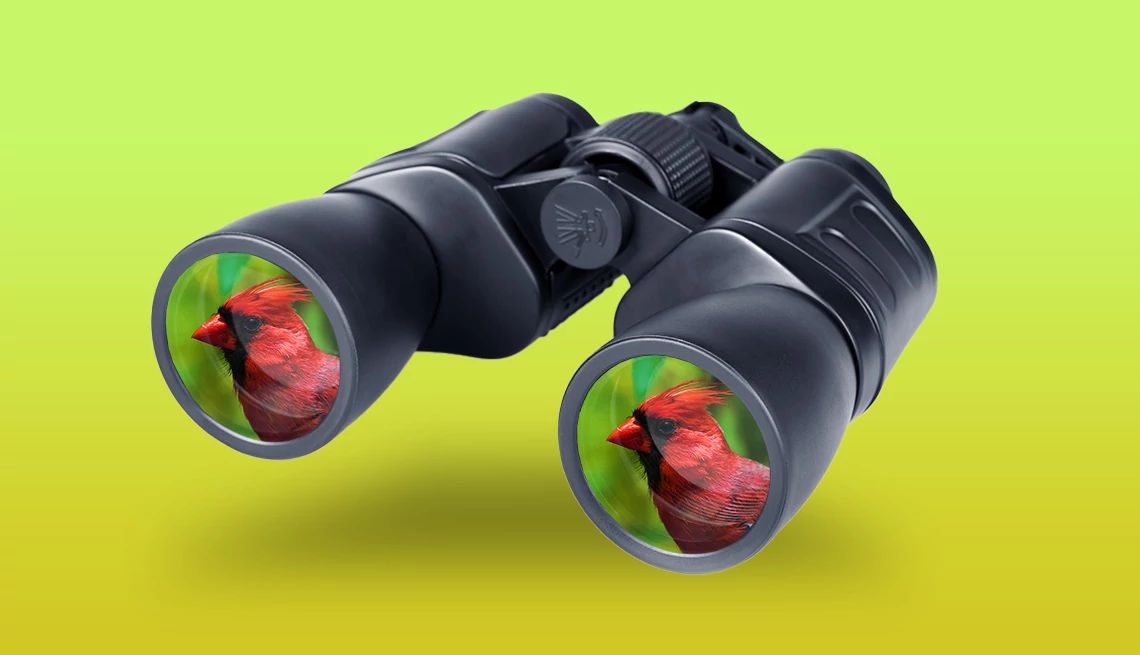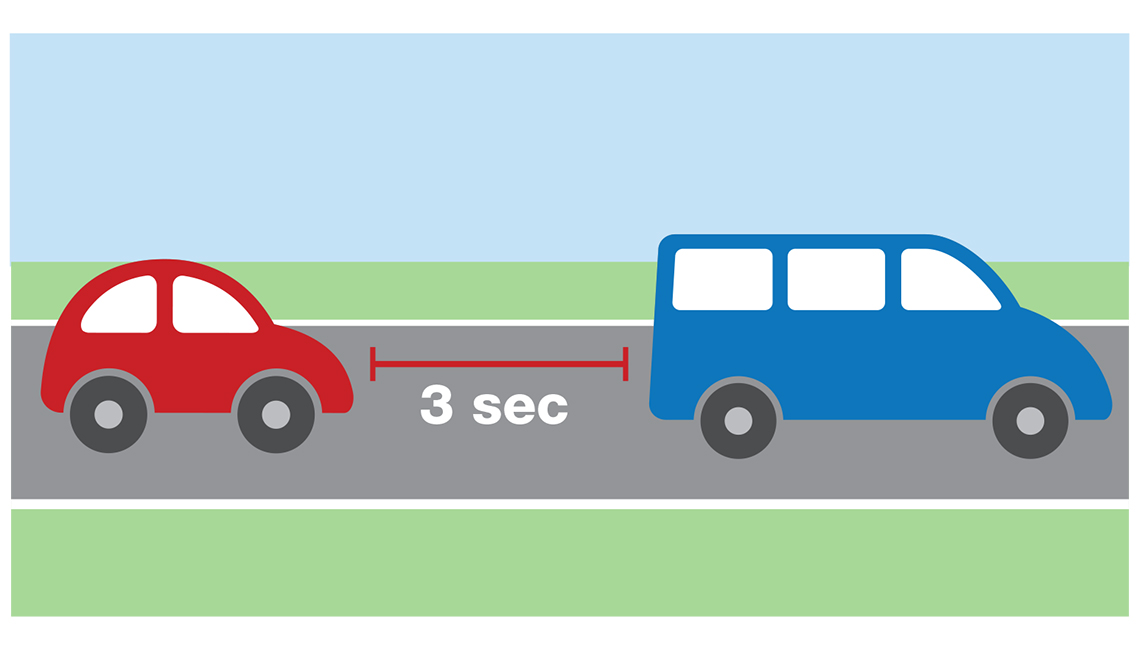
- Select a language for the TTS:
- UK English Female
- UK English Male
- US English Female
- US English Male
- Australian Female
- Australian Male
- Language selected: (auto detect) - EN
Play all audios:
Bird-watching is an easy way to enjoy nature, whether you’re focused on a robin in your birdbath or an eagle soaring above a remote lake. It’s also mentally and physically rewarding, which
makes it a great hobby to enjoy as you move into your 50s and beyond. And today, it is easier than ever to participate thanks to new digital technologies. Bird-watching’s appeal is
expanding, too, as more diverse groups take up the hobby. A big reason for that is its accessibility. Nearly everyone can take part, regardless of where they live. All you need to begin is
curiosity — although a pair of binoculars and a bird field guide or smartphone app can help. Follow these tips and you’ll be a fledgling birder in no time. Learn how to look at a bird in
terms of its size, color, feather pattern, and the shape and dimensions of its beak. Getty Images WHERE TO START 1. LOOK OUTSIDE YOUR WINDOW Start birding in your own yard or any nearby
patch of green. In a typical American backyard, you might see dozens of species — even more if you live in a coastal or migration zone. The observational skills you learn noting the color,
shapes, habits and sounds of birds in your own backyard will transfer to other locales, says Jack Gedney, author of _The Private Lives of Public Birds_ and co-owner of a Wild Birds Unlimited
bird-supply franchise in Novato, California. “I know one expert birder who lives on a coastal migration spot who has recorded over 200 bird species from his home over the past three decades
or so,” Gedney says. 2. DOWNLOAD THE MERLIN BIRDING APP The Merlin smartphone app, developed by Cornell University’s Lab of Ornithology, is a quick and easy way to identify the birds you
see. The app has downloadable guides to common birds in your region or other areas, and it covers avian species around the world. Enter a bird’s shape, color and location (for example, in a
tree or on the water), or search by sound or by uploading a photograph. (Look up Badgerland Birding, a Wisconsin-based YouTube channel for birding enthusiasts, which has an extensive
tutorial video for the Merlin app.) While not infallible, experts say Merlin is a good way for beginners to start. 3. THE EARLY BIRD GETS … TO SEE THE MOST BIRDS Expect to see the most birds
just after dawn, when their high metabolisms demand food and water after sleep, says Wayne Klockner, executive director of the nonprofit American Birding Association (ABA). Also, during the
breeding season, males wake up ready to sing, making it easier to track them. But good news for late sleepers: “You do not have to get up early,” Klockner says. “You can get up and go out
birding anytime, depending on where you are or what kind of birds you’re looking for.” In fact, dusk is the best time to spot owls, nighthawks and whip-poor-wills, he says. 4. BORROW A PAIR
OF BINOCULARS Binoculars are one of the most important tools for birders. If you’re not quite ready to spend money on this new hobby (see below), some local libraries loan out binoculars,
and birding groups often supply them to newbies who join their walks. You’ll also need to learn how to adjust and use binoculars correctly. For example, unless you’re scanning the skies for
birds offshore, spot the bird and then raise the binoculars to your eyes without averting your gaze, says Gedney. The University of Minnesota Extension has a video that explains the
different parts of a binocular as well as how to use them for birding. 5. GET A PAIR OF BINOCULARS A good pair of binoculars by manufacturers like Nikon, Bushnell and Celestron can start
at $100 to $150. To find the best pair for you, focus on two numbers. The first is magnification; the second is the diameter in millimeters of the outside lens. For example, binoculars
rated at 8X42 would magnify an object eight times with a 42 mm lens. The larger the lens, the more light the binoculars absorb — but the heavier the weight. A magnification greater than 8 or
10 might be tempting, but it will strain your eyes and make it hard to keep a steady focus, Gedney says. If 42 mm binoculars, a common standard, feels too bulky and heavy, try a 30 mm or 32
mm. “That will cost you a little brightness in low light conditions, at dusk or something,” he says. “But it will, for many people, be lighter and more comfortable to hold.” The National
Audubon Society and Cornell have sites devoted to binoculars, including specific models tested and recommended by the staff. 6. GRAB A FIELD GUIDE The various birding field guides — Sibley,
Peterson, National Geographic, Kaufman, Audubon and many others — present information in different ways. For example, some feature photographs, while others use illustrations. Some, like
Sibley and Audubon, have apps as well as print guides. Pick the one that suits your brain, or test drive a guide from the library or the app store. Experts suggest starting with a regional
guide, so you’re not overwhelmed. Gedney recommends the folding laminated guides that only have 40 or so regional birds and are easy to carry. 7. EMBRACE BIRDING TECHNOLOGY Bird-watching is
harnessing data and digital technology in countless ways. For example, eBird, another app from the Cornell Lab of Ornithology, uses crowdsourced data from birders and allows them to log
sightings, identify hot spots and create lists for themselves or to share with others. The BirdCast website, a collaboration of several universities, uses weather radar data to forecast
bird migrations, such as when songbirds are flying back to their summer grounds. (It’s usually at night.) The Birdability website aims to make birding accessible to everyone. The site has a
crowdsourced map of nature trails created in partnership with the National Audubon Society, detailing features like trail surface, length and slope; shade; parking; restrooms; and the
availability of benches. There’s also information on adaptive birding equipment such as trail chairs and halters to hold binoculars. iNaturalist is another worldwide crowdsourcing app that
helps you to identify birds, insects and plants, and collects data on sightings. 8. LEARN HOW TO LOOK AT A BIRD Observe attributes such as the bird’s size, the color and pattern of its
feathers, and the shape and dimensions of its beak. For example, a seed-eater like a goldfinch has a rounder and shorter beak than a woodpecker, which uses its long beak to hunt for insects
and drill holes in trees. Also, look at a bird’s surroundings and what it’s doing, says Nancy Villone, 72, of Cummaquid, Massachusetts, who’s been birding for about 30 years. “It’s about
its posture,” she says. “Is it on the ground? Is it on a bush? Is it up high? Is it down low? All of those clues will bring you to a better possibility of what that bird is you’re looking
at.” 9. OPEN YOUR EARS Birders use both their eyes and ears to identify a bird. However, learning to ID through sound is challenging, partly because birds use different vocalizations
depending on their intention. Mnemonics can help you remember a birdsong. For example, golden-crowned sparrows have a three-note song that follows a consistent pattern that might sound
like “I’m so tired,” or “Oh, dear me,” says Gedney. Birders with a musical bent may learn to hear birdsong as a specific pitch, he says. The Merlin Sound ID in the Merlin Bird ID app,
while not foolproof, can help beginners narrow down which birds they’re hearing. 10. GO ON A GUIDED WALK Birding clubs and organizations are almost as ubiquitous as birds, and they sponsor
walks in all kinds of environments. Find groups on social media, through local Audubon Society chapters, nature organizations and botanical gardens, or on ABA’s list of birding clubs. Many
bird walks are free, and some clubs organize expeditions just for beginners. Ask if they loan binoculars. “You really learn a lot from being around other people,” says Mark Faherty, science
coordinator for Massachusetts Audubon’s Wellfleet Bay Wildlife Sanctuary on Cape Cod. “The best advice is, ‘Don’t be intimidated.’” If one group doesn’t suit you, try another. 11. KNOW HOW
TO BIRD SAFELY Anytime you head into the outdoors, especially alone, keep basic safety rules in mind. Tell someone where you are going. Research trails and facilities before you go. Check
the weather. Wear appropriate footgear, carry water and download a map or take a printed one in case you don’t have phone or GPS service, advises the U.S. Forest Service. And it never hurts
to tote a trash bag that can double as a poncho. If you live in an area with ticks, wear insect repellent or treat your clothing and gear with a product containing 0.5% permethrin, says the
U.S. Centers for Disease Control and Prevention (CDC). You can also buy clothing and gear that’s been pretreated with permethrin. 12. EMBRACE BIRDING’S GROWING DIVERSITY Birding has
traditionally been a white hobby – 82 percent of birders identified as white in 2016, according to a U.S. Fish and Wildlife Service report. However, an incident in 2020 brought birders of
color into the national spotlight. A white woman in New York City’s Central Park called the police and accused birder Christian Cooper, who is Black, of making threats after he told her
that her dog was illegally unleashed in an area of the park that is popular with bird-watchers. Among other ramifications, the incident led the Black AF in STEM Collective
(blackafinstem.com), an organization for Black professionals in STEM (science, technology, engineering and mathematics), to organize Black Birders Week, held annually in late May to
highlight and encourage birders of color. There are now birding clubs around the country for people of color as well as women and the LBGTQ+ community. Safety is one reason Philadelphia
birder Bernie Wilson, 72, and his wife like their local In Color Birding Club (incolorbirding.org), founded for birders of color who might be uncomfortable birding alone or with all-white
groups. “There’s safety in numbers,” Wilson says. “And so we always tell people, ‘If you’re starting out, if you go far afield from your backyard or your neighborhood, go with
somebody.” 13. TAKE A MOMENT AND SIT It’s OK to let the birds do the work. Cat Fribley, executive director of Birdability, likes birding on the Mississippi River Trail not far from her
home in Iowa City, Iowa. But sometimes, she’s happy to just sit and wait. “I want to sit on my back deck and be very present, and watching what birds are here, and just being for 15
minutes, paying attention to the cardinals and the song that they’re singing and where they’re going when they take the seeds out of the feeder,” she says. Another option for bird-watching
newbies is to pick a bench in a local park or on a favorite trail, and see what birds you can see in a half hour or so.







